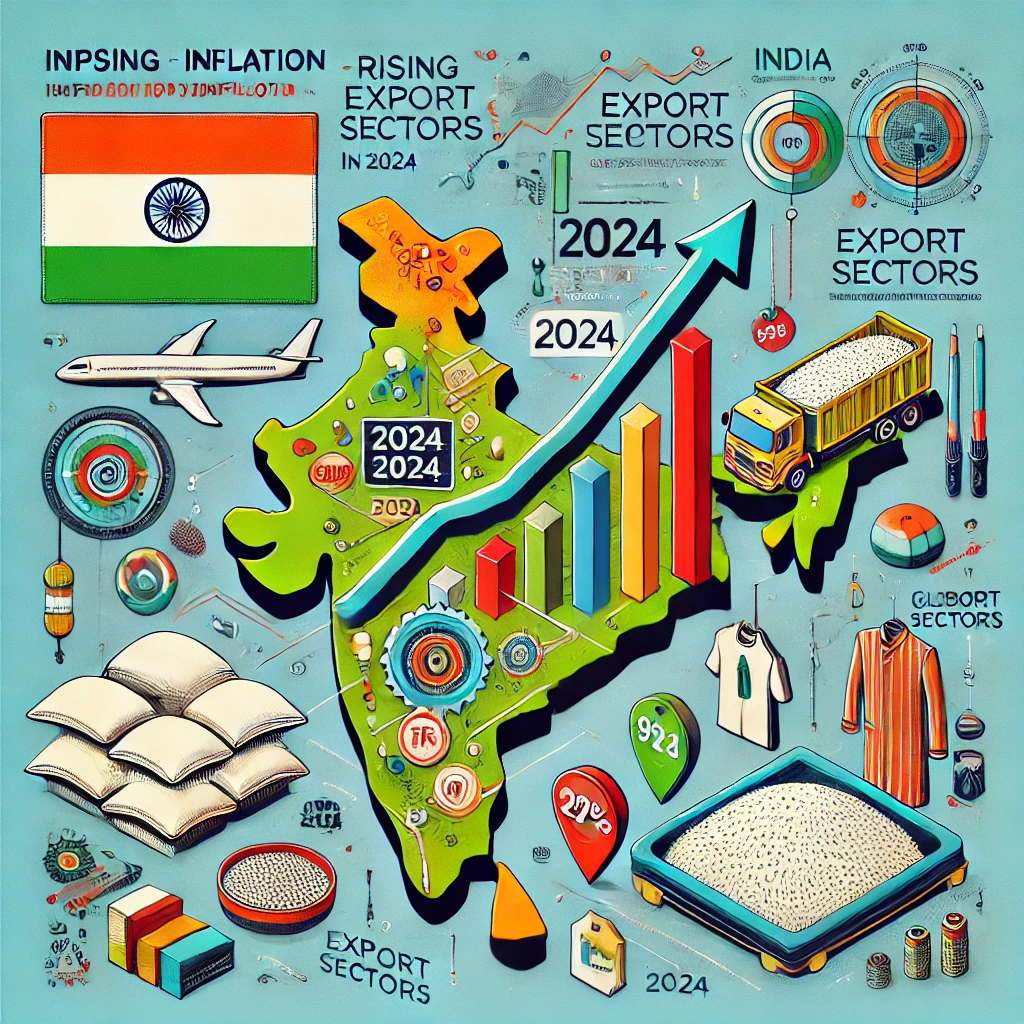Introduction to Currency Fluctuations
Currency fluctuations refer to the variations in the exchange rate of a currency against another currency over time.
These fluctuations can occur due to a variety of factors that influence currency values in the global market.
Economic indicators, such as inflation rates, interest rates, and economic growth statistics, play a crucial role in determining the value of a currency.
For instance, a country experiencing robust economic growth may see its currency appreciate in value, while a decline in economic performance may lead to depreciation.
Political stability is another significant factor impacting currency fluctuations. Countries with stable governments tend to experience stronger currencies, as global investors seek a reliable environment for their investments.
Conversely, political turmoil or uncertainty can lead to depreciation, as investor confidence diminishes.
Additionally, global market trends, including changes in trade policies, geopolitical tensions, and the performance of major economies, can also influence currency values.
The significance of currency fluctuations for international trade cannot be overstated. They not only affect the cost of imports and exports but also the competitiveness of domestic industries in foreign markets.
For instance, a strong national currency can make exports more expensive for foreign buyers, potentially leading to a decrease in demand.
Conversely, a weaker currency might bolster exports by making them more affordable on the global market.
This dynamic is particularly pertinent for the Indian economy, where numerous industries hinge on export performance.
Understanding the interplay of these factors is essential to grasp the broader implications of currency fluctuations on Indian exports, particularly as we look ahead to 2024.
Currency Fluctuations and Export Profitability
Currency fluctuations play a crucial role in determining export profitability for Indian exporters.
The value of the Indian Rupee against foreign currencies can significantly influence the profit margins achieved by businesses engaged in international trade.
When the rupee depreciates, it means that Indian goods become cheaper for foreign buyers, potentially boosting demand and increasing export volume.
This phenomenon can lead to improved profit margins for exporters, particularly in sectors reliant on price competitiveness, such as textiles and pharmaceuticals.
On the other hand, currency appreciation can have adverse effects on export profitability.
An increase in the strength of the Indian Rupee can make Indian products more expensive in foreign markets, leading to a potential decline in demand.
For example, Indian IT services, which have benefited from various currency dynamics, may face challenges in securing contracts if the rupee’s appreciation diminishes their competitive edge against service providers from countries with weaker currencies.
Long-term impacts of currency fluctuations extend beyond immediate pricing strategies. Exporters may need to adopt hedging strategies to mitigate risks associated with volatility in exchange rates.
For instance, companies may engage in forward contracts to lock in exchange rates, providing stability in cash flows.
Businesses in the agricultural sector, such as rice and spices, could face challenges if currency fluctuations lead to unpredictable pricing, affecting planning and investment decisions.
Real-life examples illustrate these dynamics effectively.
The electronics industry, particularly mobile phone manufacturing, has experienced varied impacts due to currency shifts.
When the rupee depreciated in recent years, manufacturers found themselves in a favorable position, allowing for competitive pricing in international markets.
Conversely, sustained appreciation may push manufacturers to rethink their pricing structures and supply chain strategies to maintain profitability.
In essence, managing the impacts of currency fluctuations is vital for the sustainability and growth of Indian exports across various sectors in 2024.
Current Trends in the Indian Rupee’s Value
As of 2024, the valuation of the Indian Rupee has exhibited noteworthy trends that have significant implications for the country’s export dynamics.
Throughout the first quarter of the year, the Rupee has experienced fluctuations primarily against major currencies such as the US Dollar and the Euro.
Recent data indicates the Rupee has appreciated moderately against these currencies compared to previous years, influenced by various factors including global economic conditions, domestic inflationary pressures, and monetary policy adjustments by the Reserve Bank of India (RBI).
A comparison with the US Dollar reveals that the Rupee traded at approximately 80.52 per Dollar in early 2024, a slight improvement from the 81.45 seen in late 2023.
This appreciation strengthens the purchasing power of Indian exporters, making Indian goods more competitive in global markets.
Moreover, the Euro has also demonstrated a fluctuating pattern, with the Rupee exchanging at around 88.14 per Euro, reflecting a stable economic outlook.
The interplay between these currencies highlights the importance of the foreign exchange market in shaping trade opportunities.
Historically, the Indian Rupee has been subjected to a variety of pressures, including geopolitical tensions, changes in trade policies, and global demand shifts.
This history illustrates the sensitivity of the Rupee’s value to external economic stimuli.
Looking back at trends, one can observe that significant depreciation periods often led to a surge in export revenues, as Indian goods became cheaper for foreign buyers.
Conversely, appreciation may risk squeezing margins for exporters who rely heavily on price competitiveness.
In summary, the current trends in the Indian Rupee’s value indicate a cautiously optimistic outlook for Indian exports in 2024.
The interplay of the Rupee’s stability against major currencies and the external economic environment continues to shape the export landscape, influencing the strategies adopted by Indian businesses in the global marketplace.
Sectoral Impact of Currency Fluctuations
The effects of currency fluctuations permeate various sectors of the Indian economy, with significant implications for exports.
Among the most affected sectors are textiles, pharmaceuticals, and technology, each exhibiting unique vulnerabilities to changes in exchange rates.
These fluctuations can dramatically influence cost structures, pricing strategies, and, ultimately, competitiveness in international markets.
The textiles sector, a cornerstone of Indian exports, often sees its margins squeezed by currency volatility.
As a labor-intensive industry, the cost of raw materials accounts for a considerable portion of production expenses. When the Indian rupee weakens against major currencies, exports may become more attractive in terms of pricing.
However, companies relying on imported raw materials face increased costs, thereby impacting profitability.
For instance, a prominent textile exporter reported a sharp decline in profits during a period of significant rupee depreciation, as rising input costs eroded margins despite higher sales volume.
Similarly, the pharmaceutical industry is not immune to the repercussions of currency shifts.
A large segment of this sector relies on international markets for both raw materials and finished goods. Consequently, fluctuations in currency can affect the pricing strategies of pharmaceutical companies.
A notable case study involves an Indian pharmaceutical firm that successfully navigated currency volatility by increasing its exports to markets where its products were competitively priced due to a favorable exchange rate, thus improving its market share.
The technology sector, characterized by rapid innovation and globalization, also feels the impact of currency fluctuations.
Companies in this field often deal with international clients and suppliers, exposing them to exchange rate risks.
For instance, an Indian IT services firm adapted swiftly to currency changes by hedging against losses through financial instruments, allowing it to maintain profitability even in volatile conditions.
In summary, the sectoral impact of currency fluctuations in 2024 presents both challenges and opportunities for Indian exports.
Textiles, pharmaceuticals, and technology exemplify the complexities businesses face. Understanding these dynamics will be crucial for navigating the competitive landscape effectively.
Strategies for Indian Exporters to Mitigate Risks
As Indian exporters navigate the complexities of a fluctuating currency landscape, implementing effective strategies to manage associated risks becomes paramount.
One prominent method is hedging, which entails using financial instruments to offset potential losses from currency fluctuations.
Options include forward contracts, futures contracts, and swaps, each providing a mechanism to lock in exchange rates for future transactions. By utilizing these instruments, exporters can stabilize their cash flows and protect profit margins, thereby bolstering their competitiveness in the global market.
In addition to hedging, pricing adjustments can serve as a crucial strategy. Exporters should regularly review and adapt their pricing structures in response to currency movements.
This dynamic pricing approach can involve immediate price adjustments for international clients or the strategic incorporation of currency clauses in contracts.
Such measures ensure that profit margins remain intact, even in the face of adverse currency changes.
Market diversification represents another effective tactic for mitigating risks associated with currency fluctuations.
By broadening their export markets, Indian exporters can reduce their dependency on any single currency or economy.
This strategy not only spreads risk but also opens up opportunities in emerging markets where demand for Indian goods may be rising.
Engaging in extensive market research and establishing partnerships in multiple regions are essential to successfully implement this diversification.
Finally, nurturing robust financial management practices is crucial for exporters. This includes the use of financial forecasting tools and maintaining currency reserves as a buffer against sudden exchange rate variations.
Moreover, fostering a proactive approach in monitoring currency movements and economic indicators allows exporters to make informed decisions swiftly, improving their ability to adapt to changing conditions.
In summary, by employing these strategies, Indian exporters can effectively mitigate the risks posed by currency fluctuations, ensuring sustained growth and competitiveness in 2024 and beyond.
Role of Government Policies in Currency Management

The management of currency fluctuations plays a significant role in shaping the landscape of Indian exports.
Government policies aimed at stabilizing the Indian Rupee are crucial for exporters who are often vulnerable to the unpredictability brought about by currency volatility.
Over recent years, various initiatives have been introduced to provide export support and mitigate the adverse effects of currency fluctuations.
One of the key initiatives implemented by the Indian government is the Foreign Exchange Management Act (FEMA), which regulates the foreign exchange market and aims to promote orderly development and maintenance of the Indian currency.
By establishing a robust framework for currency management, FEMA plays a vital role in ensuring that fluctuations in the Indian Rupee do not destabilize India’s export sector.
Through this act, the government seeks to ensure that exporters have predictable exchange rates, thereby facilitating better financial planning.
Additionally, the government has introduced schemes such as the Merchandise Exports from India Scheme (MEIS) and the Export Promotion Capital Goods (EPCG) scheme.
These programs offer incentives to exporters, making it less burdensome for them to navigate through periods of currency fluctuation.
By encouraging exports through financial assistance and incentives, these government strategies reinforce the overall resilience of the export sector against volatile currency movements.
The Reserve Bank of India (RBI) also plays a pivotal role in managing currency fluctuations through its monetary policy and interventions in the forex market.
By adopting measures to control inflation and stabilize the currency, the RBI aims to create a conducive environment for exports.
The effectiveness of these policies is critical in how well exporters can adapt to changing currency values while maintaining competitiveness in international markets.
As 2024 progresses, it will be essential to analyze the impact of these government policies on exporters, especially in light of the ongoing challenges posed by global economic conditions and currency dynamics.
Balancing between inflation control and export growth remains a continuing challenge for policymakers.
Global Economic Factors Influencing Currency Fluctuations
The dynamic landscape of currency fluctuations is heavily influenced by a variety of global economic factors. One of the primary determinants includes international trade agreements that countries engage in.
Such agreements can alter currency valuations by affecting trade volumes and terms of exchange. For instance, a favorable trade agreement can enhance exports, leading to increased demand for a country’s currency, thus strengthening its value.
Conversely, unfavorable trade deals can lead to depreciation, affecting something as significant as the balance of trade.
Geopolitical tensions also play a crucial role in shaping currency movements.
When geopolitical stability is threatened, investors often seek safe-haven currencies, such as the US dollar or Swiss franc, thereby leading to depreciation of other currencies.
For Indian exporters, understanding these tensions is vital, as they can create unpredictable market conditions and impact pricing strategies.
Furthermore, shifts in political power can result in changes to economic policies, which may foster or hinder export growth.
Another critical factor influencing currency fluctuations is the economic performance of trading partners.
The relative strength of economies affects trade dynamics and currency strength.
Strong economic indicators, such as GDP growth, employment rates, and consumer confidence in major trading nations can lead to currency appreciation, while poor performance may lead to a devaluation.
Indian exporters must remain vigilant about these economic indicators from their key markets, as they can directly impact the demand for goods and services.
Finally, global market sentiments and investor behavior can cause rapid currency fluctuations.
Events such as financial crises, natural disasters, or significant market shifts can lead to immediate and profound effects on currency value.
Recognizing these global economic factors is essential for Indian exporters who need to navigate the complexities of currency fluctuations effectively, ensuring they remain competitive in the constantly evolving global marketplace.
Future Outlook for Indian Exports Amid Currency Volatility
The landscape for Indian exports is likely to be shaped significantly by ongoing currency fluctuations in the coming years.
As the global economy continues to evolve, shifts in exchange rates can create both challenges and opportunities for exporters.
For instance, a weaker Indian Rupee may enhance the competitiveness of Indian goods in international markets, making them more attractive to foreign buyers.
This could potentially lead to an increase in export volumes, particularly in sectors like textiles, pharmaceuticals, and engineering goods, which are heavily reliant on international trade.
Conversely, currency volatility poses several risks that exporters must navigate. Sudden appreciations of the Rupee may erode profit margins, impacting the pricing strategies of Indian products abroad.
Furthermore, exporters could face increased uncertainty regarding revenue, complicating long-term planning and investment decisions.
Hence, a key focus for exporters in 2024 will be adopting effective hedging strategies to mitigate the risks associated with currency fluctuations.
Many experts suggest that leveraging financial instruments such as options and forwards can help exporters stabilize their cash flows in an unpredictable market environment.
In conclusion, while currency fluctuations present a complex interplay of risks and opportunities for Indian exporters in 2024, proactive strategies, market diversification, and technological advancements will be crucial in navigating this challenging landscape.
By staying ahead of trends and continuously adapting to economic shifts, exporters can work towards sustaining growth in times of volatility.
Conclusion
In summary, currency fluctuations play a significant role in shaping the landscape of Indian exports in 2024.
Throughout this discussion, we have highlighted the intricate relationship between exchange rates and export performance.
Fluctuations in currency values can create both opportunities and challenges for exporters, impacting pricing strategies, profit margins, and overall competitiveness in global markets.
A thorough understanding of these dynamics is crucial for Indian exporters who are looking to optimize their operations amidst a constantly changing economic environment.
Moreover, exporters must be aware of external factors, including geopolitical developments, monetary policy shifts, and macroeconomic trends, which can contribute to currency volatility.
As determined exporters navigate these fluctuations, the need for adaptable strategies becomes evident. Risk management tools, such as hedging and diversification, can be vital in mitigating the adverse effects of exchange rate movements.
Businesses that proactively address currency risks are better positioned to maintain their profit margins and market presence.
In the long run, the implications of currency fluctuations could profoundly affect India’s export growth and overall economic performance.
Sustained volatility in exchange rates may compel exporters to continuously reassess their strategies, ensuring they remain competitive in the global marketplace.
India’s ability to adapt to these fluctuations will not only influence individual businesses but could also contribute to the broader economic landscape, fostering resilience and growth in the export sector.
Therefore, enhancing awareness and understanding of currency fluctuations among Indian exporters is essential for sustaining growth and fostering economic development in a dynamic environment.







